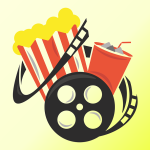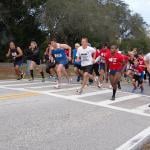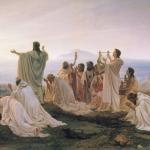
Last summer I got to spend a bit of time with my friend George Guthrie (Union University). I passed by George’s desk at Tyndale House and I was immediately struck by how well-organized he was, and he seemed to have an efficient system for research. Now it is time for George to share his “ways” with the world! Thanks, George!
NKG: How do you approach research as a whole? Do you have a big-picture strategy? Do your research all at once, and then write? Do you do some sketching and reflecting on paper and then dig into research? Do you go back and forth?
The method of research depends somewhat on the type of project. My larger project at the moment is a commentary on Philippians for the Zondervan Exegetical Commentary series.
I begin by translating and diagramming the next passage in the book, doing a good bit of primary source study, checking word meanings, for instance, in the book, broader NT, LXX, Philo, etc. The nice thing about commentary writing is that you always know what you must do next—the book unfolds systematically, verse by verse. The hard thing about commentary writing is that you must do that next thing whether you are particularly interested in that bit or not! Yet, interest often follows a deeper look!
As for research, you access the commentaries of others as a main part of the research, and commentaries by their nature are already “sorted” in terms of the data to be accessed. You know right where to find an author’s treatment of a word or phrase in a given book. So I do not normally take notes from all the commentaries I am accessing for the project. I read widely on a given passage and write it up straight from the commentaries themselves. I do the same with related journal articles. So if I am dealing with 1:12-17 in a book, I do my own study, perhaps writing up my own basic exegesis first, and then I read secondary literature on the passage, adjusting my thoughts in places and incorporating the insights of others.
If I am writing a journal article or paper for presentation, I begin by thinking very carefully about the structure of what I want to do, using an Outliner program like Omni Outliner. I tend to take notes into a database (like Tap Forms on the Mac or an Excel Spreadsheet), adjusting the outline as I go. My notes will have fields like Author, Reference, Page Number, Image, Note, and a Key Field. The Key Field is my main tool for indicating where that note will come in my paper. I then give each note a “key” (put in a key field) according to where it comes in my outline. I sort the Key Field, and my notes are now arranged as they are going to come in my paper. I then write the paper.
In writing up my research I use the word processor Mellel, which plays very nicely with foreign languages, including Hebrew, and is brilliant once you get the hang of a “style” orientation. It is so much better than Word. And I use Mellel in combination with Bookends, a Bibliography/Reference manager. I can’t imagine writing longer projects without them.
NKG: What kind of notes do you take (ideas, quotes, etc.)? How do you organize them?
I take notes that consist of the summary of another author’s ideas, or direct quotes. I also at times will snap an image (e.g. the layout of ancient Corinth) and include that in my database. Finally, as I have ideas that I want to pursue, I will write these in a database note as well.
NKG: What kind of tools do you use for researching and collecting information? (software? Do you store notes in Endnote? Dropbox? Evernote? Filing cabinet?)
The library, of course. I have benefitted greatly from times at Tyndale House in Cambridge, UK, but I also appreciate our library and the Ryan Center for Biblical Studies at Union University where I teach. I also find Google Books very helpful for researching hard to find material, and I use online databases like Ebsco and the ATLA Religion and similar databases, the Duke Papyri database, the Greco-Roman material that one can now download to Logos, etc. My primary software program is Accordance, which I use on an almost daily basis.
For articles and helpful blog posts I transform them to PDF through the Mac’s “Print” function and import them directly into Devonthink Pro. I am constantly putting articles there for future reference, and those articles then are searchable. I also bring PDFs into PDF Expert to read and mark them.
Most of my actual notes are stored in a database. I have done this in Excel, and Devonthink has a decent database function (in terms of creating your own notes), but I am currently experimenting with Tap Forms. I used to use Bento, which was brilliant but is no longer available.
I am now going digital as much as possible and rarely depend on a filing cabinet any more. The ability to search thousands of documents instantly has transformed all of that, and I can simply print out a document to read if I need to.
NKG: What have you learned about doing research, collecting notes, and the process of writing throughout your career – put another way, if you could get into a time machine and go back twenty years (or ten years), what advice would you want to give to your younger self about the process of research and how you take notes and read scholarship?
Of course the main thing that has changed over the past 3 decades is the technology. But if I could go back to my 14-year-old self, I would tell me to take all the languages I could, both modern and ancient. I would encourage me to spend my summers in immersion language programs internationally. And as for research itself, I would encourage me to do lots of primary research and keep track of it carefully. As software developed I would exhort me to build a massive, searchable database of everything I was reading and studying, keeping at least summary notes that could later be searchable. And on a side note, I would also tell me to buy as much Intel and Apple stock as possible, to fund research trips in my 50s!!











